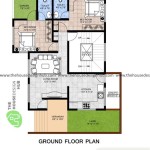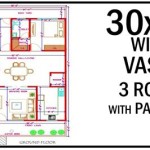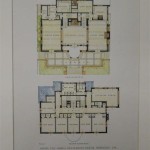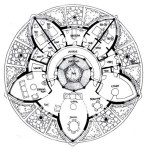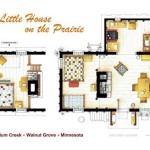Plan Houses: A Guide to Essential Aspects
Plan houses, also known as prefabricated houses or kit homes, offer a convenient and cost-effective solution to meet diverse housing needs. These houses are constructed in a factory setting before being transported and assembled on-site, providing numerous advantages over traditional building methods.
Benefits of Plan Houses
Time-Saving: Prefabrication significantly reduces construction time compared to conventional methods. This allows for a quick and efficient building process, enabling occupants to move into their homes sooner.
Cost-Effective: Plan houses offer a lower construction cost due to economies of scale and efficient use of materials. Factory production allows for precise manufacturing and eliminates the need for on-site labor, reducing overall expenses.
Quality Control: The factory setting provides a controlled environment, ensuring consistent quality in the construction process. Prefabricated components undergo rigorous inspections, resulting in a more durable and well-built home.
Flexibility: Plan houses offer a wide range of designs and floor plans to suit individual preferences and needs. Buyers can choose from preset options or customize their homes based on specific requirements.
Sustainability: Modern plan houses are designed to be environmentally friendly, utilizing sustainable materials and construction methods. They are often energy-efficient, reducing utility costs and the homeowner's carbon footprint.
Essential Aspects to Consider
Design: Determine the style, layout, and size of the plan house that best fits your lifestyle and needs. Consider factors such as the number of bedrooms, bathrooms, and living spaces.
Materials: Choose high-quality materials that meet your requirements for durability, insulation, and aesthetic appeal. Popular options include wood, steel, and engineered wood products.
Customization: Explore the flexibility offered by plan houses. Many manufacturers allow for customization to meet specific needs, such as additional windows, modified interior layouts, or unique exterior finishes.
Site Selection: Select a suitable site with adequate land area, access to utilities, and favorable soil conditions. Consider the orientation of the house to maximize natural light and minimize energy consumption.
Building Permits: Obtain the necessary building permits from local authorities. Plan houses typically require specific inspections to ensure compliance with building codes.
Installation: Hire a qualified contractor to handle the installation of the plan house. The contractor will coordinate the transportation, assembly, and connection of utilities.
Maintenance: Proper maintenance is crucial for the longevity and performance of plan houses. Follow manufacturer's instructions for regular inspections, repairs, and cleaning to preserve the value of your home.
Conclusion
Plan houses offer a compelling alternative to traditional building methods, providing speed, affordability, quality, and sustainability. By carefully considering the essential aspects discussed, you can create a home that meets your specific needs and preferences while enjoying the benefits of prefabrication. Embrace the advantages of plan houses and experience a seamless and rewarding homebuilding journey.

House Plans How To Design Your Home Plan

House Plans How To Design Your Home Plan

House Plans How To Design Your Home Plan

House Plans How To Design Your Home Plan

Small House Design 2024001 Pinoy Eplans Floor Plans

House Plans How To Design Your Home Plan

10 Things To Consider In A House Plan Ck

Small House Design 2024005 Pinoy Eplans Modern Plans Floor

House Plan Maywood Sater Design Collection

Floor Plans Types Symbols Examples

